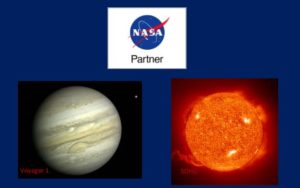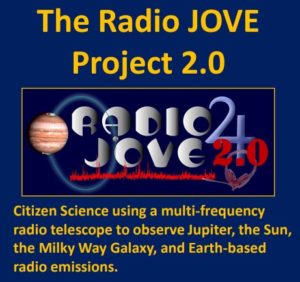NASA’s new radio JOVE project kits use SDRplay
Today, NASA’s Radio JOVE project has announced it will use the RSP1A in its latest Radio Telescope Kit
Click here to download the new project brochure
The Radio JOVE 2.0 Radio Telescope Kit contains the SDRplay radio, a dual-dipole radio antenna, cables and connectors, and Radio-Sky Spectrograph (RSS) computer software to display and record the data. With this, astronomers can then set up their radio telescope by simply attaching cables and downloading and installing radio control software. They then choose to either construct a dual dipole antenna or to buy a professionally built antenna.
Everything they need to do, is covered in the comprehensive receiver and antenna assembly manuals. The receiver manual contains setup instructions and troubleshooting procedures. The Radio JOVE team is available to help people ensure it all works – if people really get stuck, they can send questions to the Radio JOVE team who will help them get it working.
NASA’s Radio JOVE project is a hands-on inquiry-based educational project that allows students, teachers and the general public to learn about radio astronomy by building their own radio telescope from an inexpensive kit and/or using remote radio telescopes through the Internet. Participants also collaborate with each other through interactions and sharing of data on the network
The SDR receiver, the accompanying Radio-Sky Spectrograph (RSS) software, and the radio antenna, are designed to operate over an 8 MHz wide range of frequencies centered on 20 MHz. This frequency range is optimum for detecting Jupiter decametric radio signals, and is excellent for detecting solar radio emissions, the galactic background from the Milky Way, and natural and artificial Earth-based radio emissions.
Click here to find out more about Project Jove

More about the Radio JOVE project:
The Radio JOVE project began in 1999. Since then, more than 2500 teams of students and interested individuals have purchased our non-profit radio telescopekits and are learning radio astronomy by building and operating a radio telescope. This self-supporting program continues to thrive and inspire new groups of students as well as individuals.
Since 2016, the scope of the Radio JOVE project has been extended to incorporate citizen science research in heliophysics. By participating in the project, citizen scientists can (1) gain hands-on experience in building and operating single-frequency radio telescopes constructed from inexpensive kits, (2) make radio observations by operating their basic radio telescopes, and (3) analyze the data obtained by the telescopes they constructed or from remote telescopes through the Internet.

